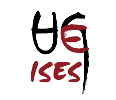You are here > Home > PRESENTATION ABSTRACTS
Literate as Storyteller: A Study of Traditional Bearers
Author: Gao, Hehong
Affiliation: Institute of Ethnic Literature (IEL), Chinese Academy of Social Sciences (CASS)
Through a target field study on the complexity between orality and literacy among related ethnic minority groups in China, we found that manuscript or manuscript-derived culture has been playing a significant role in their own written traditions. Meanwhile, in the eyes of those indigenous people, culture transmitted orally is equally important to its counterpart, namely culture recorded through writing. As a striking fact however, a new sort of traditional inheritors has appeared during the past century or more: they no longer stick to the time-honored way by which their ancestors' capacity of storytelling has been handed down for ages. This new trend suggests that there has been radical change in respect of the main mode of oral traditional transmission, and a series of theoretical contradiction and interest confliction concerning "traditional inheritor " appear thereof.
This present paper will attempt to set forth a new typology on "traditional inheritor" by employing the conception of "traditional bearers and practitioners," a terminology coming from the ideological trend in safeguarding intangible cultural heritage under the UNESCO's 2003 Convention.
Firstly, such a new sort of storytellers can be observed as a specific bearers of oral traditions with following features: (1) They are not illiterate, but well educated (some of them received higher education), such as scholars in the late Qing Dynasty, Yellow Shirt Team who dedicated to the royal family by telling stories, well known folk storytellers, local literati, and scholarly researchers, as well as the Shaman or mukunda (the leader) of a local clan. (2) No matter what ethnic group they belong to, all the above mentioned storytellers grew up in oral culture from childhood; they inhabit in the ethnic minorities' compact region where full of strong atmosphere of telling their ancestors' stories, folktales, family histories or life stories. (3) They all possess a powerful sense of self-pride for ethnicities in their bloods.(4) They are experienced practitioner enriched by their insights of life-world and reinforced by their capability of personal expression and language skills-- some can perform in public, while others can only tell or write.
Secondly, this paper will provide with further evidences came from case studies centering on individual traditional bearers and practitioners. (1) Fu Yuguang, Zhao Dongsheng, Zhao Junwei and He Shihuan are representatives who transmit Manchu traditional storytelling; (2) He Junyou who are keen at the Xibe's oral heritage of folktales (long in local tongue);(3) Yang Jiuqing, a folk storyteller comes from the Hui People (Muslim); and (4) Yang Xinghua , singer of Miao epic King Yalu .
Thirdly, if we could invent a new label on the typology of "traditional bearers and practitioners," we can call them "storyteller with multiple capabilities," or "literate storyteller" for short. Storytellers with multiple capabilities not only master oral literature home, but also hold a position in composition of written literature. They integrate the oral and the written together through ways of speaking or literal recording. They love to take down what they are narrating, or they heard from others before. They spontaneously create thick corpus of storybooks through multiple ways: collecting folklore, compiling folktale, collating self-storytelling script, writing down mental text, publishing audiobook, even engaging in investigation and research as a scholar.
In sum, this new sort of traditional bearers and practitioners are those who dwell in the tradition itself, not only an inheritor, but also a creator or inventor, even an interpreter. They can lay claim to real traditional carriers over any a label in common senses. Today, with the booming of electronic media and cultural industry, they will play more and more important roles in intergenerational transmission of human storytelling and its verbal art.
